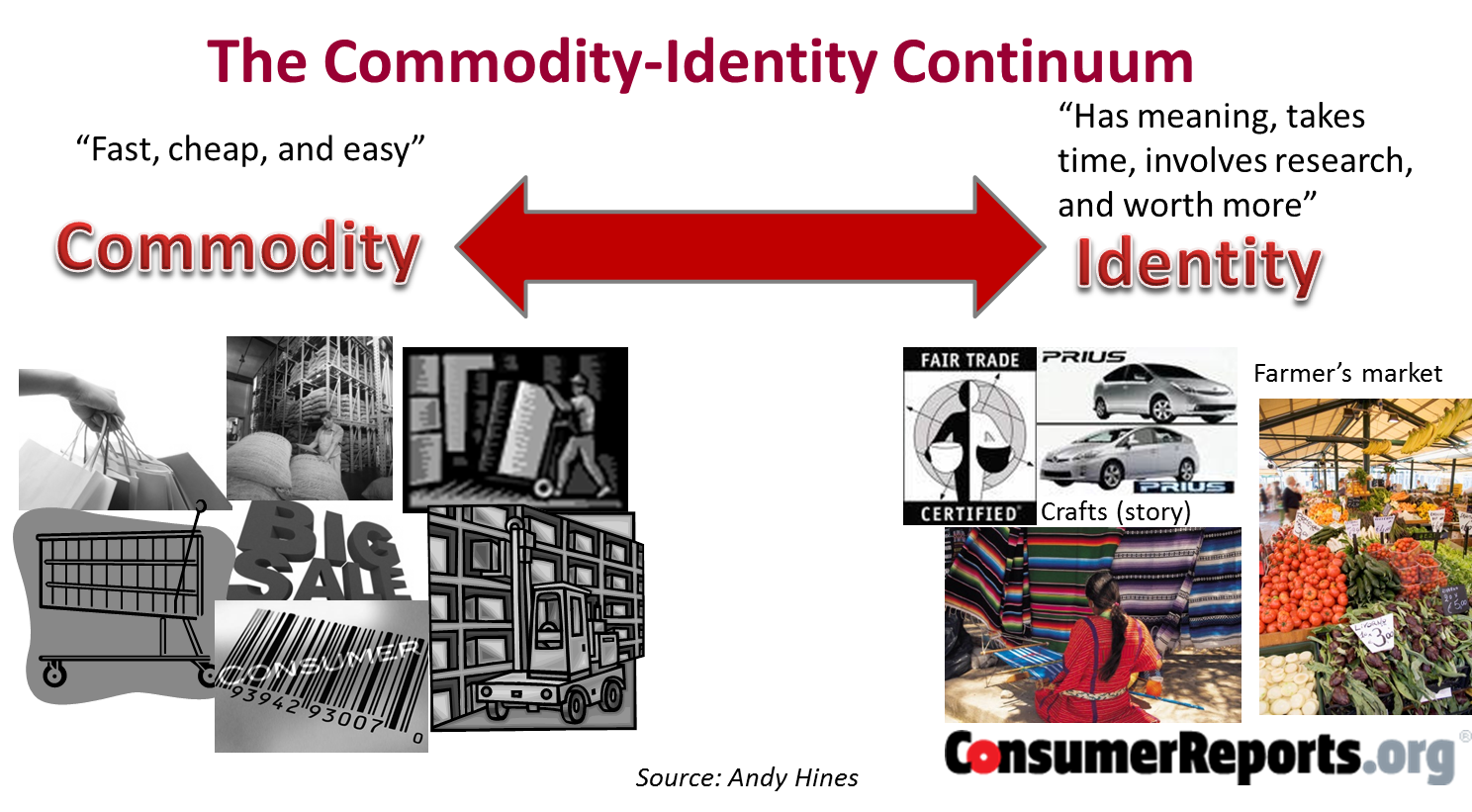One of the interesting insights that emerged from Consumershift was the commodity-identity continuum. It suggests that the postmodern and integral consumers are informally sorting their purchasing decisions along a continuum. The commodity pole is for those offerings that are not viewed as important to identity. For these products and services, which consumers don’t care much about, they choose what is fastest, easiest, and cheapest. They need to make the purchase, but just want to make it as quickly and painlessly as possible with cost in mind.
The identity pole is the opposite, in which the offerings are seen as fundamental to one’s identity. These products and services, and the relationships in which they are embedded, mean a lot to people because they are seen as part of their identity. Thus, thus they invest their time and money on those. For example, one buys a hybrid vehicle because they are environmentally conscious. They may spend lots of time doing research and shopping, even in the case of a relatively inexpensive purchase, because the offering says something about who they are. For instance, coffee beans may be carefully chosen because quality coffee is important to their identity. At the same time, a relatively high-dollar purchase at the commodity pole, such as a new car, may be made rather quickly, because to them a car is simply a means of transportation. These consumers may spend a lot of money on identity items and then scrimp on others; thus the phenomena of spending big money on a designer items but cutting costs on “essentials.”
For businesses, or any organization that offers a product or service to customers (including non-profits, government agencies, and educators) it might be a useful exercise to sort where your portfolio of offerings fall. Are you heavy on the commodity or identity end? Would your portfolio benefit from a re-balancing? Those at the commodity end are relatively “low maintenance” but often operate at razor-thin margins. Those toward the identity pole are higher value-added, but require more investment. So, where do you want to play in the future on the commodity-identity continuum? Andy Hines

Leave a Reply